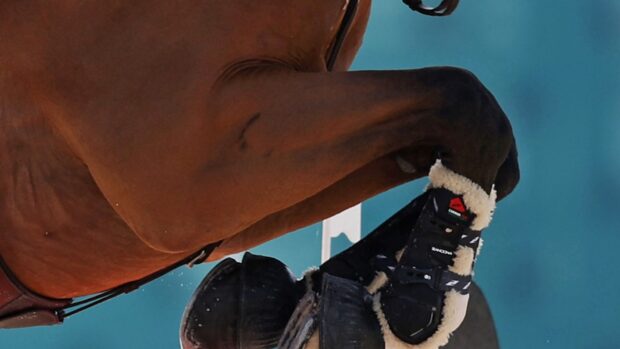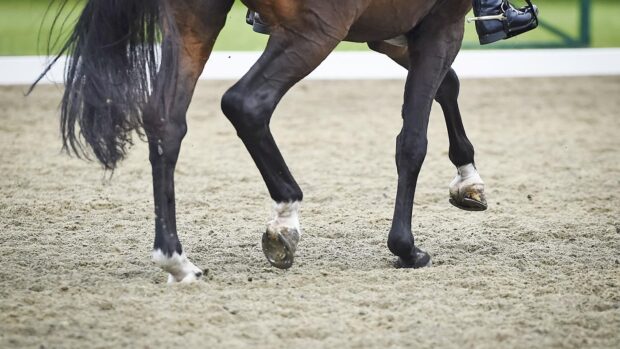An alternative route to help less experienced event riders climb the ladder to the top of the sport has received strong support as the FEI finalises its rules for next year.
The current rules were changed midway through the 2021 season, which required less experienced riders to achieve an additional qualifying result at CCI3*-L level before stepping up to CCI4*-L.
The New Zealand federation voiced concerns that this “may discourage riders from pursuing an eventing career”. It cited major delays for those in countries with few CCI3*-L classes and the potential knock-on effect that this could make CCI4*-L classes “non-viable” in those countries owing to small entry numbers.
The federation put forward a “safe and progressive” option for riders to undertake one CCI3*-L and two CCI4*-S, instead of two CCI3*-L and one CCI4*-S.
Britain has “fully supported” the alternative route, as has Switzerland and the US.
H&H covered the first draft of proposals in detail this summer (news, 10 June, 29 July, 5 August), and the FEI has now pressed pause on several major changes mooted in those initial documents.
These include changes to how penalties are allocated for activating a frangible device – a hot topic this season – and the so-called re-qualification rule. The latter of these stems from data showing there is a “significant increase in horse fall risk when a horse returned to play” at four- and five-star after not competing internationally for 18 months or more.
“We recognise why the FEI would like to introduce this rule but there is a very strong feeling from British riders that if re-qualification must be taken that it can be taken at the short level and not long,” stated feedback from British Equestrian, requesting that re-qualification at a national event also be considered as an alternative.
The FEI eventing committee has now temporarily shelved the suggestion until 2023 to allow time for “additional study and review before implementation”.
There will also be no change to the frangible device rules in 2022, with the suggested changes sparking strong reaction from federations.
Currently, combinations receive 11 penalties for activating a frangible device where the dimensions of a fence are modified. For example, a horse hits a jump, the device activates and part of the fence comes down. The FEI suggested clarifying this so penalties are given “if one of the frangible device clips clearly breaks (hook clearly opens from the bolt)”.
The British federation has urged the FEI to consider hind-leg activations “in a different light” to front-leg activations, while others found the FEI’s wording confusing and that the change would put “a lot of responsibility on the fence judge”.
“Although the [German federation] strongly encourages the use of the MIM clip and other new inventions, the stakeholders want safety devices only to prevent horse falls and not [changing] the cross-country [into] another kind of showjumping competition,” states feedback from the German federation, adding that it prefers the current wording.
The German federation also suggests that the course-designer, ground jury and technical delegate are given the freedom to decide ahead of a competition whether 11 penalties are waived for fences using new types of frangible devices.
“This would still encourage the [course-designer] and [organising committees] to make use of new devices to gain more experience with it but would not result in penalties that are felt as unfair,” it adds.
The addition of a rule stating that air jackets are “recommended” received mixed feelings, with Britain and the US among the federations that both supported – and requested further evidence – to back this up.
‘Marshmallow fluff’
The question over where to draw the line between treating and cheating in dressage was sparked by the first-draft suggestion to ban “any type of white substance” that could indicate foaming at the mouth and potentially cover lip injuries.
“Some horses foam when given a sugar cube or gum bits, which should not be penalised by this rule change,” noted the US federation. “If the intent is to prohibit “marshmallow fluff” or similar substances, it should be specifically noted, as to not potentially penalise a horse given a sugar cube/gum bits, etc.”
The final rule stands that it is: “strictly forbidden to use any type of white substance (like “marshmallow fluff”, shaving cream, etc…) around the horse’s mouth to imitate foaming; this is considered cheating and against horse welfare as it can hide lip injuries. This will result in a warning or a yellow card.”
The suggestion to split the single harmony mark into two – in broad terms, one mark for horse and one for rider – received support from federations, but has been thrown out by the FEI.
Blood rules across all disciplines, never far from the debating table, were tabled for discussion by the European Equestrian Federation this year. But while there will be no changes for 2022, the topic has not gone away.
An FEI response stated that the “short timeframe” and “complexity” of the issue meant the FEI Board has tasked the technical chairs to discuss [and] review the existing blood rules within the discipline-specific rules and veterinary regulations, in consultation with the FEI legal department.
“The matter will be further discussed after such review, acknowledging that changes to the blood rules, if any, would be deferred to a later stage,” it added.
Voting on the final draft of proposals will take place at the FEI general assembly in Belgium (14–17 November), at which point the final set of 2022 rules will be rubber-stamped.
View the final proposals ahead of the vote at the FEI general assembly
You might also be interested in:

Subscribe to Horse & Hound magazine today – and enjoy unlimited website access all year round

Blood rules, top hats and herbs under FEI discussion

‘Fifth man’ could compete and rider licences are on the cards *H&H Plus*
Horse & Hound magazine, out every Thursday, is packed with all the latest news and reports, as well as interviews, specials, nostalgia, vet and training advice. Find how you can enjoy the magazine delivered to your door every week, plus options to upgrade your subscription to access our online service that brings you breaking news and reports as well as other benefits.




